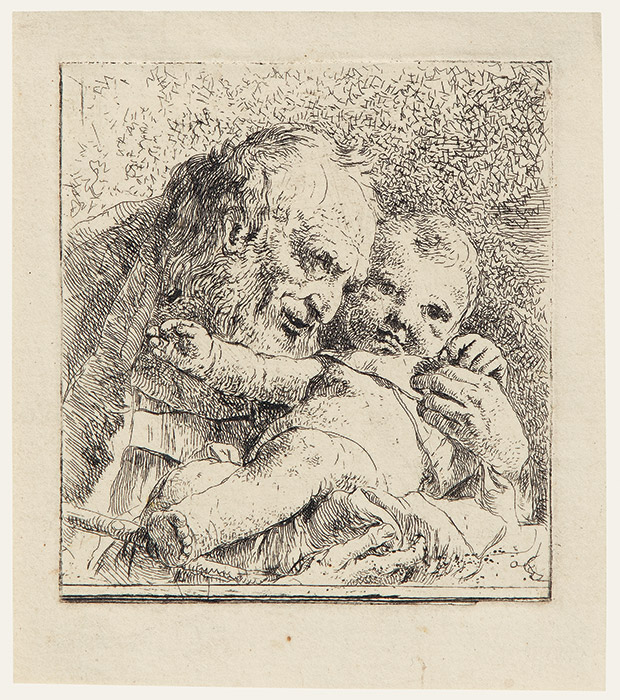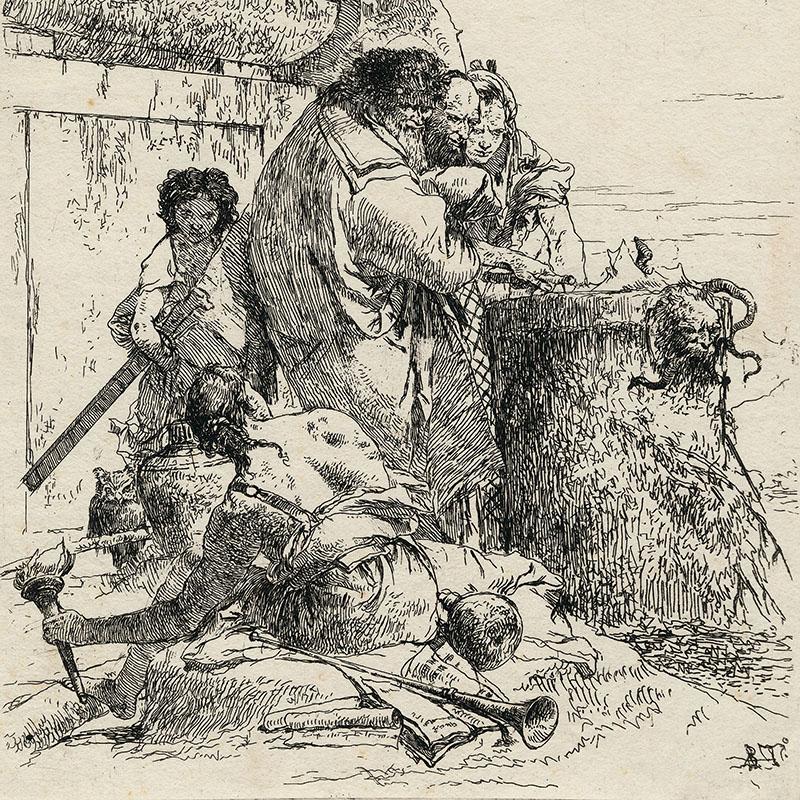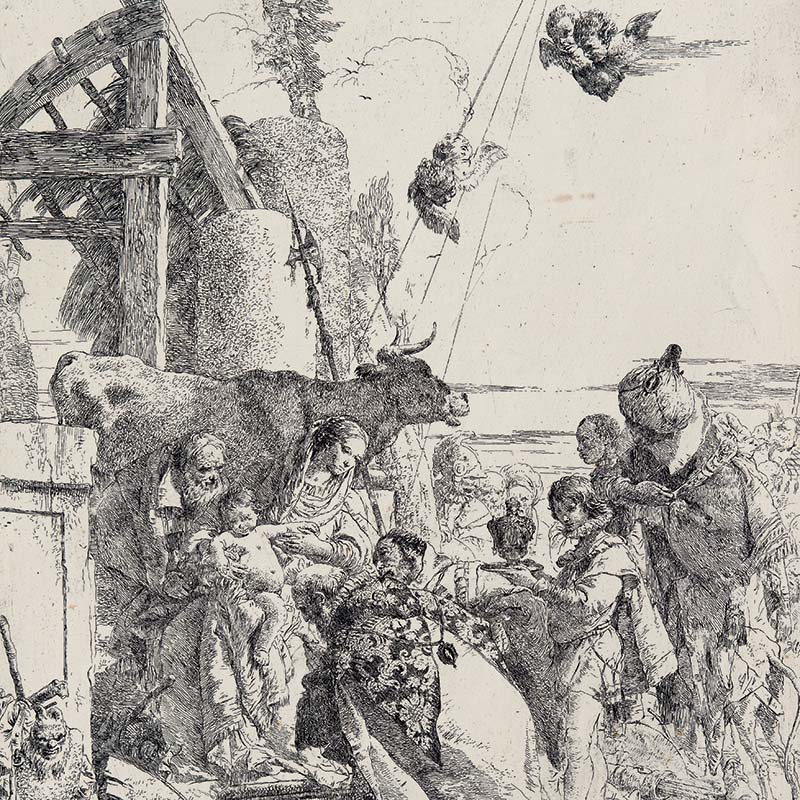Giovanni Battista Tiepolo
Venice 1696 - Madrid 1770
96 x 87 mm; the sheet 121 x 106 mm
De Vesme, 1905, n. 2, p. 382 I/II
Signed on the plate BT F in reverse, lower right
Provenance:
unidentified collector mark star on the verso Star (Lugt.2883 a) with another not in Lugt.
A very fine, clear and early impression made prior to the addition the number 24 at top right. Remains of ink along the platemark as in pristine impressions. With good margins, minor traces of old mounts on the verso, generally in fine condition.
This small print was published in the first edition of the catalogue of Giandomenico’s etchings as the 15th Scherzo, in which it was recorded between the last of the Scherzi and the Adoration of the Magi. Later impressions were numbered 24.
As noted by Diane Russel in the catalogue of the Rosenwald Collection, post-Tridentine church doctrine accorded a special status to St. Joseph, after which images of him holding the Infant Christ came to prominence. The Rosenwald example of our print (National Gallery of Art, Washington, Rosenwald Collection, B-19.894) is – like ours ¬¬– a first state impression, but retouched in pen in several places. Another fine impression is preserved in the British Museum, registration number 1907,0515.84.165.
References:
Diane Russel, Rare etchings by Giovanni Battista and Giovanni Domenico Tiepolo, National Gallery of Art, Washington,1972, no. 40, p. 82 I/II
Rizzi, 1970, no. 27 I/II; Rizzi, 1971, no. 28 I/II
David Tunick, Inc. Italian Prints of the Eighteenth Century, Catalogue no. 11, 1981, see Appendix, no. R28 I/III
Succi, Il Segno e l’Enigma, 1985, no. 70 I/III
Price: 5,500.00 €
Information on the master
Born into a wealthy family in Venice, Giambattista Tiepolo was recognized by contemporaries throughout Europe as the greatest painter of large-scale decorative frescoes in the 1700ies. He was admired for having brought fresco painting to new heights of technical virtuosity, illumination, and dramatic effect. In 1710 Tiepolo became a pupil of Gregorio Lazzarini, a successful painter with an eclectic style. He was, though, at least equally strongly influenced by his study of the works of other contemporary artists such as Sebastiano Ricci and Piazzetta and those of his Venetian predecessors, especially Tintoretto and Veronese. In 1719 he joined the Venetian guild of painters and soon turned away from the darker hues of the Baroque opting for sunny colourful tableaux instead. His first success testified to his new style: a series of frescoes on biblical scenes for the episcopal palace in Udine in 1726. Tiepolo's commissions came from the old established families of Italy, religious orders, and the royal houses of Spain, Germany, Sweden, and Russia. Tiepolo was equally prized as a draftsman: his powers of invention were boundless and his facility without equal. His imaginative prints enjoyed wide fame and their dreamlike and sometimes troubling imagery of sorcerers and punchinellos may have influenced Goya.
Other works of the master


